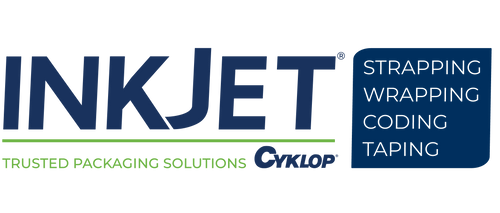How to Improve Manufacturing Efficiency & Productivity | In-line Improvements #6 | InkJet, Inc.
Simply put, high efficiency is a goal shared by companies regardless of industry. Every business strives to have great workflows, quality hardware, and top-notch organization to boost productivity. Manufacturing groups in particular are known to continually look for ways to improve their existing processes for greater overall output.
This search for improvement can focus on a variety of elements, ranging from minor tech additions that reduce defects to larger workflow adjustments. While the success of certain operational changes will differ from organization to organization, many modifications are proven to be effective more often than not.
One such change is eliminating hand-labeling to reduce both cycle times and general labor costs. For those considering how to improve manufacturing efficiency, switching from hand-labeling to automated labeling provides a number of benefits.
Automated Labeling Benefit #1: Streamline Set Up
Despite the absence of direct marking technology, hand-labeling is a time-consuming process to both set up and complete. Labels need to be designed, printed, and placed on products by designated workers. Although companies with smaller-scale output/product diversity may be able to complete these tasks in an hour or two, businesses that manufacture a variety of products often have to dedicate entire shifts to finish hand-labeling.
Further, as companies grow, their physical label inventories grow as well. Businesses that rely on hand-labeling eventually discover how complicated it is to maintain an organized SKU inventory. If workers aren’t meticulous at all times when choosing labels from the stockpile, it can lead to supply chain-complicating problems that require hours to fix.
Conversely, automated labeling equipment like continuous inkjet printers, thermal inkjet printers, print-and-apply labelers, and high-res case coding, like the Precision series, can all streamline the label creation and application processes. Each of these systems can be easily integrated into a larger IT infrastructure in order to access data for streamlined label design as well as to create a completely digitized label inventory. With these benefits, operators can greatly reduce the amount of time needed to begin product coding.
Automated Labeling Benefit #2: Minimize Production Waste
Beyond consuming excessive amounts of time, hand-labeling also creates a significant amount of material waste. To apply labels by hand, workers must first print out large label sheets, remove the stick-on labels one by one, and then throw the sheet into the trash. Inherently, this is a wasteful process, and over time, the price of stick-on labels becomes a larger and larger presence on overall expenses.
Instead of printing out wasteful rolls of stick-on labels, with the right technology, companies can place required information and traceable codes directly onto product packaging. By switching to a labeling system like the Anser Pro-S or the Precision series high-res case coders, operations can eliminate this source of waste altogether.
Automated Labeling Benefit #3: Lower Production and Labor Costs
By reducing setup time and eliminating stick-on label waste, automated labeling systems not only improve manufacturing efficiency but also lower production costs and labor needs as well. Stick-on labels are expensive and need to be restocked constantly. Comparatively, industrial printers are powered by long-lasting ink cartridges, enabling companies to create more codes at lower price points.
Additionally, automated labeling systems don’t require the same amount of worker attention as hand-labeling does. Many of today’s printer systems can be operated remotely, allowing users to create coding action items and then focus on more pressing tasks. As a result, companies can reduce their overall labor needs while still maximizing product output.
Searching for How to Improve Manufacturing Efficiency? Contact InkJet, Inc. for Help
Automated labeling systems enable companies to streamline the marking process, reduce production waste, and scale down their labor needs. With these benefits, companies can increase their productivity levels for better output and profitability. However, switching from hand-labeling to an automated system can be a daunting task.
Given the sheer amount of industrial printers and ink formulas on the market today, many businesses can quickly become confused about which equipment is right for them. Fortunately, InkJet, Inc. is here to guide you.
Over the last 30 years, we here at InkJet, Inc. have helped companies across industries discover which printer/ink combinations will be most beneficial to their operations. From aerospace engineering to plastic/metal extrusion and everything in between, we understand what it takes to mark products at industrial speeds without sacrificing quality. Call today to learn what we can do for you.
To learn more about how to improve manufacturing efficiency and productivity, contact us online today or call 1(800) 280-3245.



